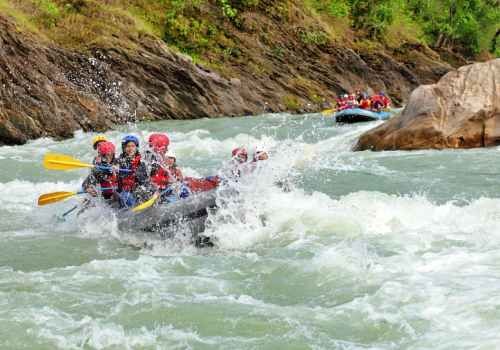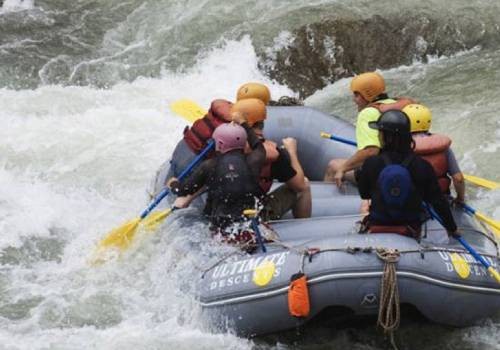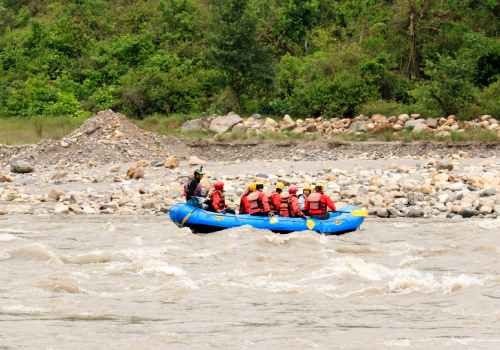‘Enjoy the adventure and great thrill paddling downstream on river of gold’
Sun Koshi River Rafting for 8 days, or more depends upon time of as well flow of water volume according to season-wise. Sun Koshi River, listed as the world ten best rivers for white-water rafting and scenic floats, as well a rafting expeditions.
The longest duration Rafting Rivers starts from Nepal Mid-East and ends at southern Gangetic plains around far southeast Nepal.
Sun Koshi, fed from the source of various glacial tributaries streams and rivers as far from the Tibetan plateau. The river known as Bhote Koshi later joins to make Sun Koshi River that runs through the great valley. As it flows in between the Mahabharata Range of rolling green hills and continues downstream to the warm tropical Terai belt.
Sun Kosi means “River of Gold” in the early days, the local villagers residing on the riverside, used to pan for gold. Where the trend continues but in smaller numbers than in the early days, which you can witness on Sun Koshi Rafting.
Sun Koshi Rafting, a moderate river in the first place after Bhote Koshi and Melamchi River joins. At a small town of Dolalghat where our rafting starts after two hours of drive from Kathmandu.
The river narrows through a deep gorge encountering mighty exciting rapids for some days as paddling progress heading further downstream. Further down the river broadens as Tama Koshi, Dudh Koshi and Arun River joins including Tamur River to form greater Sapta Koshi.
Sapta Koshi, the meeting point of all seven great rivers of mid and Far Eastern Nepal. As well as the end of Sun Koshi Rafting at Chattare, but the river continues downstream towards India to join Ganges.
The main highlights and fun of Sun Koshi Rafting is going through exciting rapids and camping on sandy beaches. Likewise, exploring rural farm villages and entering into a jungle corridor of mixed forest, with chances of spotting some wild-life.



